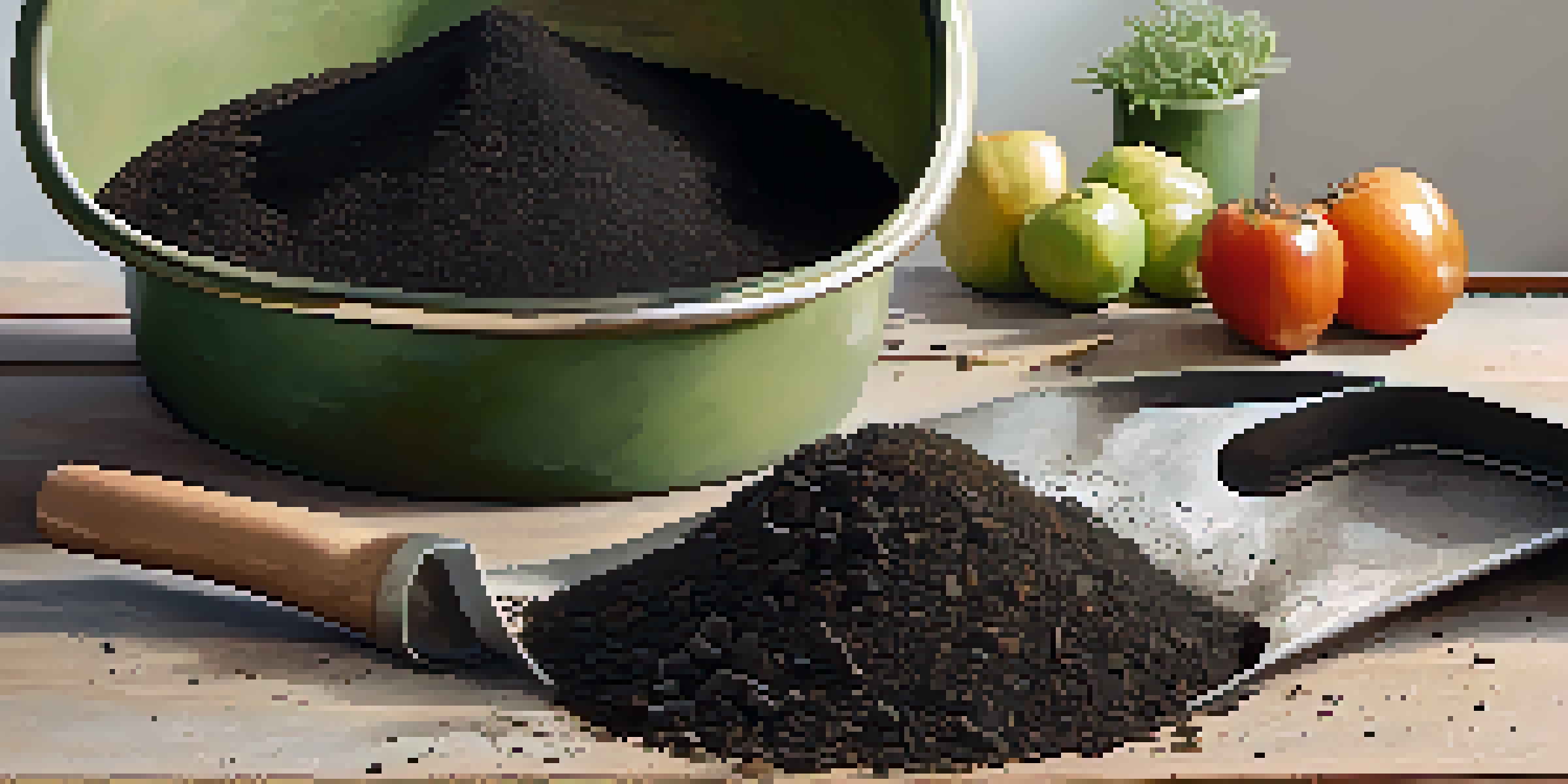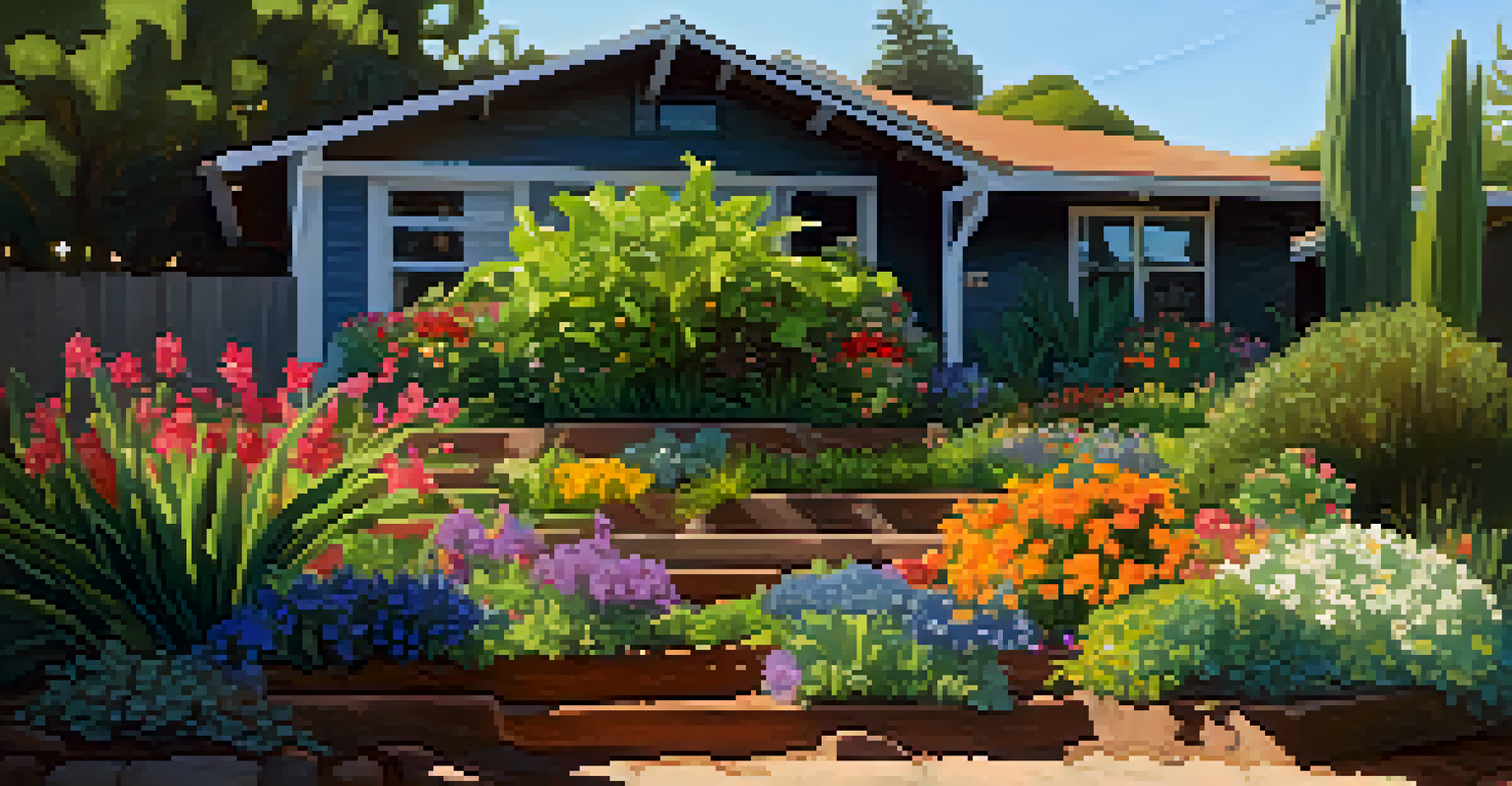Composting 101: Reduce Waste in Santa Barbara Gardens

What is Composting and Why is it Important?
Composting is the natural process of recycling organic matter, such as food scraps and yard waste, into a rich soil amendment known as compost. This process not only reduces the amount of waste sent to landfills but also enriches the soil, making it a fantastic choice for Santa Barbara gardens. By composting, you’re not just throwing away scraps; you're creating a resource that benefits your garden and the environment.
Composting is a wonderful way to return nutrients to the earth, and it’s a simple way to make a positive impact on the environment.
In Santa Barbara, where the climate can be dry and the soil often needs improvement, composting can greatly enhance soil health. It helps retain moisture, provides essential nutrients, and encourages beneficial microorganisms. This is especially important for local gardeners looking to grow vibrant plants and flowers.
Moreover, composting contributes to reducing greenhouse gas emissions. When organic waste decomposes in landfills, it produces methane, a potent greenhouse gas. By composting at home, you’re doing your part to combat climate change while nurturing your garden.
Getting Started: Composting Methods for Beginners
Starting your composting journey can be as simple as choosing the right method for your space and lifestyle. There are several ways to compost, including traditional pile composting, bin composting, and even vermicomposting, which uses worms to break down organic matter. Each method has its pros and cons, so consider what works best for your Santa Barbara garden.

If you have ample space, a traditional compost pile can be a great option. Simply pile up your kitchen scraps and yard waste in a designated area, turning it occasionally to aerate it. On the other hand, if you’re short on space, compost bins can contain the material better and keep your garden tidy.
Composting Enriches Soil Health
Composting not only reduces waste but also enhances soil health by retaining moisture and providing essential nutrients.
For those who want a unique twist, vermicomposting is an exciting option that involves using worms to decompose organic waste. This method produces nutrient-rich compost while taking up minimal space. Many Santa Barbara gardeners find this method fascinating and effective!
What Can You Compost? The Do's and Don'ts
Understanding what to compost is crucial for successful composting. You can include a variety of organic materials like fruit and vegetable scraps, coffee grounds, eggshells, grass clippings, and leaves. These items break down easily and contribute valuable nutrients to your compost pile.
The greatest threat to our planet is the belief that someone else will save it.
However, not everything can go into your compost. Avoid composting meat, dairy, oils, and processed foods, as they can attract pests and create unpleasant odors. Additionally, items like pet waste and certain weeds should be kept out to maintain a healthy compost environment.
In Santa Barbara, it's also wise to consider local regulations regarding composting. Some areas might have specific guidelines on what can be composted, especially if you’re using a community composting system. Always check to ensure you’re following best practices.
Maintaining Your Compost: Tips for Success
Once you’ve started your compost, maintaining it is key to producing high-quality compost. Regularly turning your pile or bin helps aerate the materials, speeding up the decomposition process. Aim to turn it every few weeks, especially in warmer months when decomposition happens faster.
Moisture levels are also crucial. Your compost should feel like a damp sponge – not too wet and not too dry. If it’s too dry, add some water or green materials like fresh grass clippings. If it’s too wet, add dry materials like shredded leaves or cardboard to soak up excess moisture.
Simple Methods for Beginners
There are various composting methods like traditional piles, bins, and vermicomposting to suit different spaces and lifestyles.
Temperature is another indicator of a healthy compost system. Ideally, the inside of your compost pile should reach 130°F to 160°F, which helps kill pathogens and weed seeds. If you notice your compost isn’t heating up, it might be time to add more nitrogen-rich materials or turn it more frequently.
Harvesting Your Finished Compost: When and How
Knowing when your compost is ready is an exciting part of the process! Finished compost typically looks dark and crumbly, with an earthy smell that’s pleasant and rich. This usually takes anywhere from a few weeks to several months, depending on the materials and conditions.
To harvest your compost, simply sift through your pile or bin and separate any larger, unfinished materials. These can be returned to the compost system to continue breaking down while you gather the fine compost for your garden. Use a garden fork or shovel to help with the process.
Once harvested, you can use your compost in several ways: mix it into your garden beds, use it as a top dressing for your lawn, or even create potting mixes for container gardening. Your plants will thank you for the nutrient boost!
Composting Challenges: Troubleshooting Common Issues
While composting is a rewarding endeavor, you might encounter a few challenges along the way. Common issues include unpleasant odors, pests, or slow decomposition. The good news is that most problems can be easily addressed with a few adjustments.
If you notice a foul smell, it could mean your compost is too wet or has too many nitrogen-rich materials. Turning the pile and adding dry materials like leaves can help balance it out. On the other hand, if your compost smells sweet, it’s a good indication that it’s decomposing well.
Troubleshooting Composting Issues
Common composting challenges such as odors and pests can be resolved with simple adjustments and maintaining a balanced mix of materials.
Pests can also be a concern, especially in warm climates like Santa Barbara. To deter unwanted critters, avoid composting meat or dairy products, and ensure your compost bin is sealed properly. Keeping your compost pile balanced with the right mix of green and brown materials will also help minimize pest attraction.
Community Resources for Composting in Santa Barbara
Santa Barbara offers a wealth of resources for those looking to dive deeper into composting. Local community gardens often have workshops, and many organizations provide valuable information on composting techniques tailored to our unique climate. Joining these groups can enhance your skills and connect you with fellow gardening enthusiasts.
The City of Santa Barbara also has initiatives promoting composting and sustainability. They may offer compost bins at a subsidized rate, educational materials, and even community composting events. Participating in these programs can help you gain hands-on experience while contributing to the city's green efforts.

Additionally, online platforms and social media groups can provide support and inspiration. Connecting with other Santa Barbara gardeners can help you troubleshoot problems, share success stories, and stay updated on the latest composting practices.